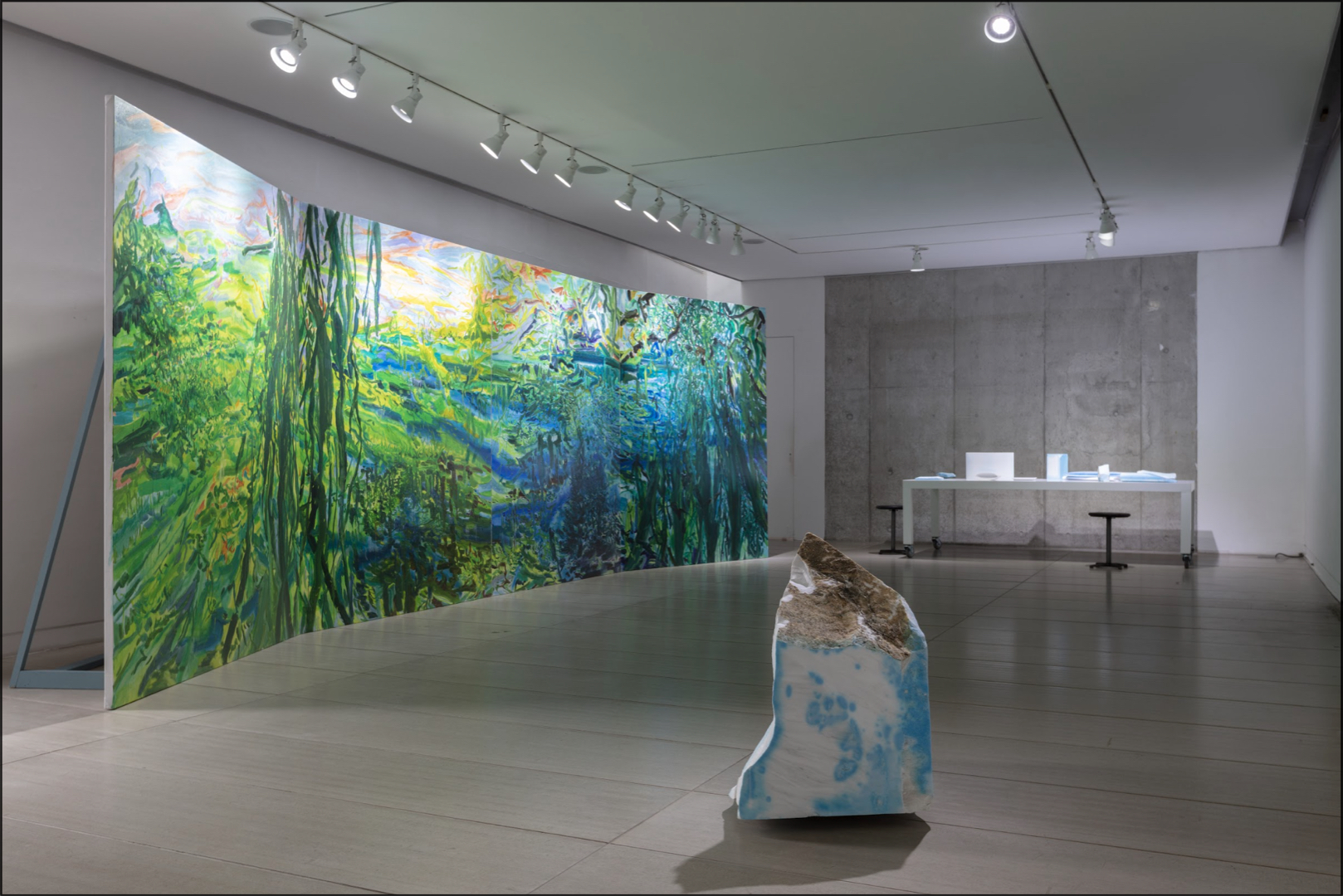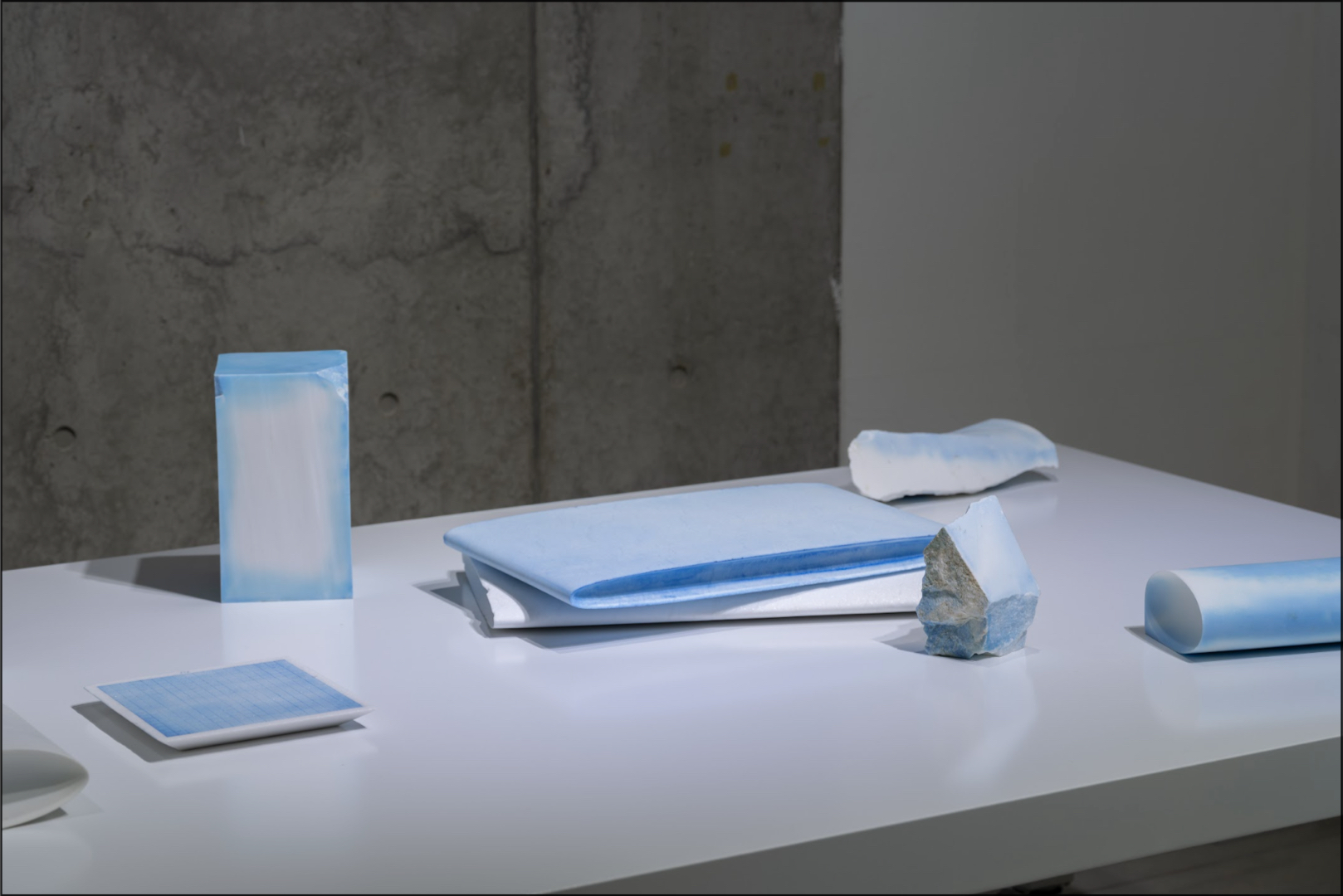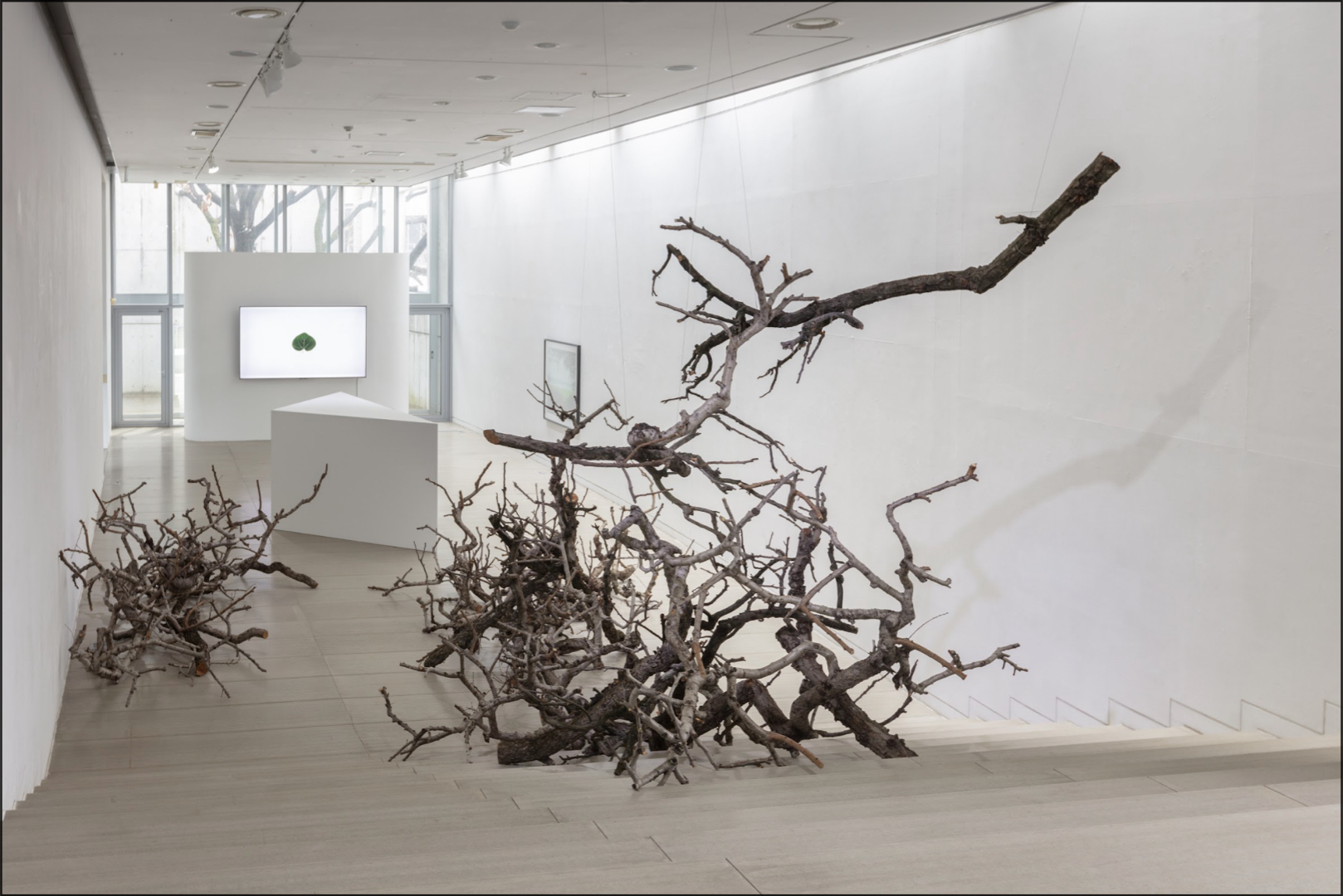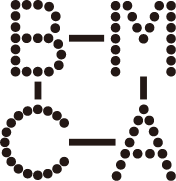
0의 산책자 - 회복연습의 길
A Walker On the Restorative Path
A Walker On the Restorative Path
A Walker On the Restorative Path
A Walker On the Restorative Path
|
0의 산책자 - 회복연습의 길 A Walker On the Restorative Path
|






|
자연이 어떻게 생각하는 뇌를 회복시키는가
참여작가ㅣ 권현빈, 김준, 박소희, 박형근, 오지은, 우숙영, 134
“우리의 뇌는 자연이 필요하다.” 많은 뇌과학자들이 자연의 효과를 연구하고 있다. 보다 구체적 수준에서, 측정 가능한 결과치로 자연의 가치를 탐구한다. 많은 예술가들도 예술의 언어로 자연의 가치를 해석해왔다. 그 해석의 동기 중 하나는 인간이 자연을 마주할 때 수많은 감정에 휩싸이는 이유와 예술작품과 만날 때의 신경학적 반응이 연결되어 있기 때문일 것이다. 예술이나 자연이 내면의 가장 깊은 감정을 얼마나 자극하는지 증명하는 연구들에서 과학자들은 인간이 느끼는 미적 호감의 생물학적 기반이 동일하다는 것을 발견하였다. 예술 경험과 자연 경험 시 같은 뇌 부위, 인간이 자기 자신을 생각할 때 주로 활성화되는 영역인 ‘디폴트 모드 네트워크’가 깨어난다는 것이다.
예술의 공간과 자연의 공간이 공존하는 블루메미술관의 건축 20주년을 기념하는 이 전시는 예술의 힘으로 자연의 힘을 읊어 보고자 한다. 여러 성격의 힘 중에서 과잉 활성화된 것을 비활성화 상태로 낮추고 억제된 것을 이완시켜 0의 균형 상태로 되돌리
는 회복의 힘에 관해서이다. 자연 결핍의 시대 길가의 나무 한 그루를 품고 지은 건축, 정원이라는 작은 자연을 돌보는 미술관이 목도한 작지만 강력하고 중요한 힘에 관한 것이다.
이때 회복의 힘이 작용하는 장소로 주목하는 것은 인간의 정서적뇌이기보다는 인지적 뇌이다. 자연경험의 손실과 더불어 시대 많은 사람들이 집중력을 도둑맞고 불안과 우울증을 앓고 있는 때, 이 전시는 예술가들에게 자연의 무엇이, 어떤 자연이 예술적 발화의 작용에 관여하는지, 창작을 위한 회복과 재생에 어떤 영향을 미치는지 물으며 예술가의 언어를 따라 0이라는 회복의 상태를 함께 연습하는 자연산책자들을 위한 하나의 산책로를 일구어 보고자 한다. 이 길에서 자연은 권현빈의 작은 바위 하나 또는 조망성 있는 오지은의 큰 풍경처럼 서로 용량이 다르고, 박형근의 생명을 품은 은신처의 시선이나 박소희의 엉클어진 소멸의 공간처럼 해체되거나 생성되는 모습으로, 때로 김준이 전하는 날 것의 소리로, 134가 자연 앞에 자세를 낮추어 시선을 맞추는 문화적인 제스처로, 우숙영이 담아낸 다양성 그 자체와 같은 여러 모습의 단면들로 서로 다른 산책자들에게 회복연습을 제안할 것이다. 그 과정에서 우리 모두가 한번쯤은 연습한 적이 있는 '미시적 회복 경험'을 찾을 수 있을 것이다.
여기서 ‘미시적 회복 경험(micro-restorative experience)’이
란 부정적인 생각을 되씹는, 뇌의 과잉활성화 상태인 ‘정신적 반
추’를 부추기는 도시환경과 달리 자연 산책에서 우리도 모르는 사이 주의를 끌어 반추로부터 빠져나오는, 특정한 정신적 노력을 필요로 하지 않는 특별한 형태의 주의력을 경험하며 정신 에너지가 회복된다는 ‘주의력 회복 이론’에서 언급되는 경험이다. 이러한 회복 경험이 일어나는 길 위의 조건들에 대해서 과학자들은 양과 크기, 입증할 수 있는 결과치에 집중한다.
|
Participating ArtistsㅣKwon Hyunbhin, Kim Joon, Kim Taewoo, Park Soohee, Park Hyunggeun, Oh Jieun, Woo Soogyeong
Blume Museum of Contemporary Art presents The Walker on the Restorative Path, celebrating the 20th anniversary of its architecture, where art and nature coexist. This exhibition aims to celebrate the power of nature through art.
This exhibition describes the experience of cognitive restoration in nature through the language of art focusing on the power of restoration to bring the overactive down to an inactive state, relax the inhibited, and return to a state of zero balance.
“Our brains need nature.” Many neuroscientists are studying the effects of nature. They believe there is a connection between why we experience so many emotions when we encounter nature and the neurological responses we have when we encounter art. At a time when many people suffer from loss of concentration, anxiety, and depression as well as the loss of natural experiences, the works of art by seven artists will discuss how nature restores the thinking brain.
This exhibition asks the artists what and how nature is involved in the workings of artistic utterance, how it affects the recovery and regeneration for creation, and seeks to create a trail for nature walkers who follow the artists’ language to practice together the state of recovery called zero. Along this path, nature will propose a restorative practice to different walkers in different capacities, such as a single rock by Hyunbhin Kwon or a large landscape by Jieun Oh, and in different forms of deconstruction or creation, such as the gaze of a life-bearing shelter by Hyunggeun Park or the tangled space of disappearance by Sohee Park, sometimes with raw sounds by Joon Kim, sometimes with the cultural gesture of 134’s stooping down to make eye contact with nature, and sometimes with the diversity itself captured by Soogyeong Woo.
In an era marked by nature deficiency, Blume Museum
of Contemporary Art — a place built to embrace even a single roadside tree and care for its garden as a small nature — communicates the small but powerful and vital forces of nature it has witnessed. Visitors stepping onto this exhibition’s walking path will discover “micro-restorative experience” that everyone has practiced at least once, encouraging a renewed connection with nature’s healing presence.


